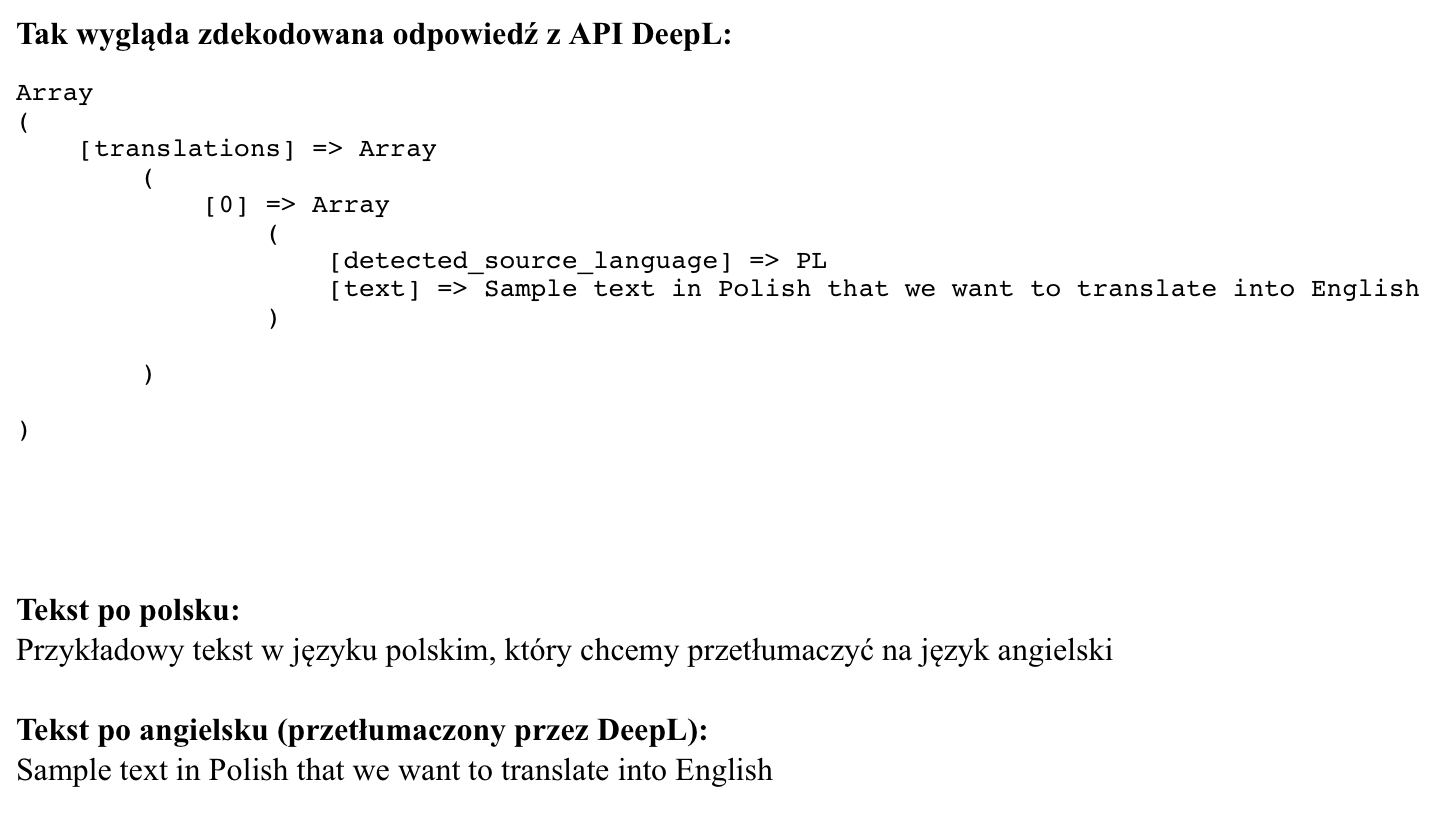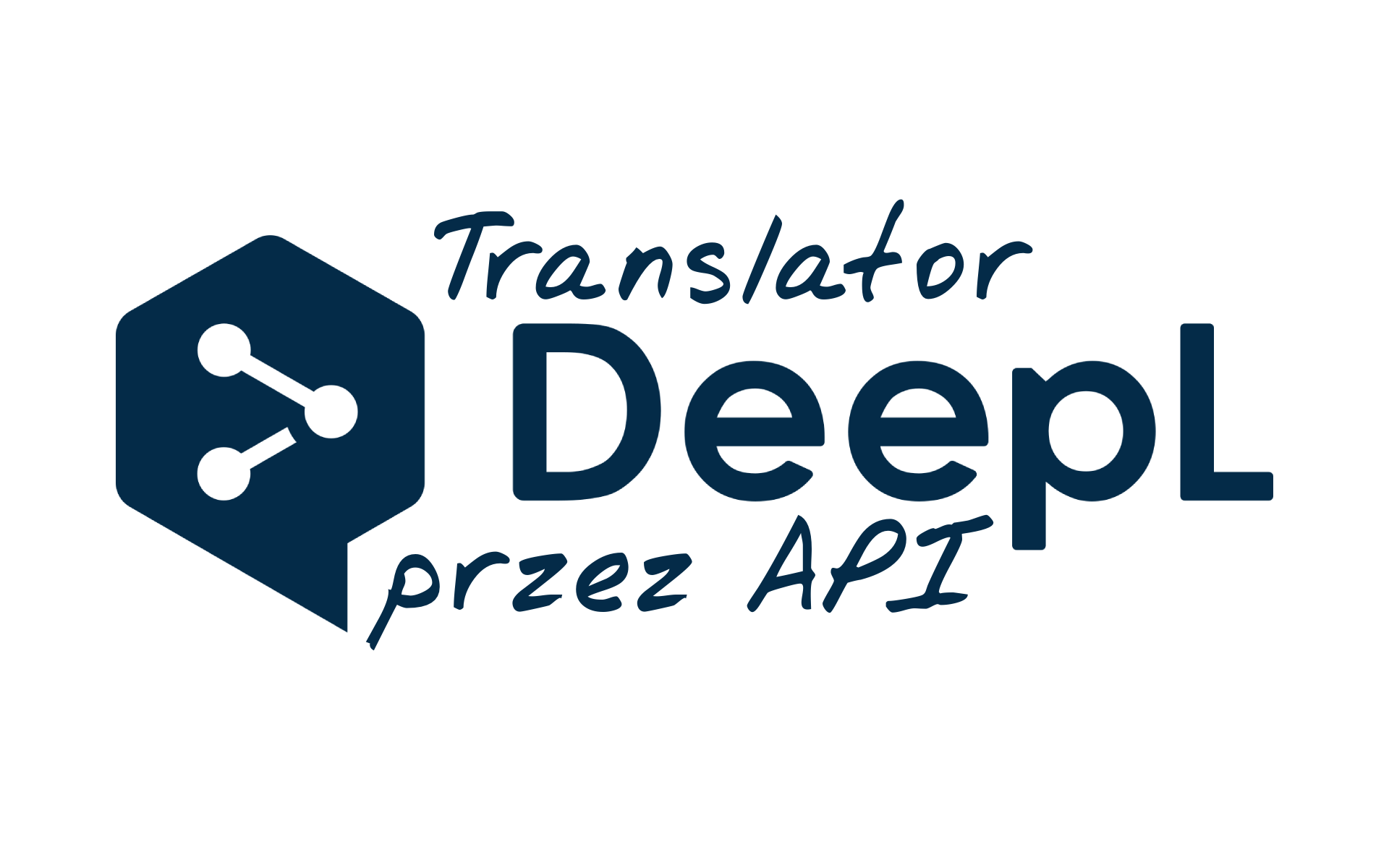🇵🇱 Przejdź do polskiej wersji tego wpisu / Go to polish version of this post
DeepL is a machine translation service, which in simple terms can be described as a translator, operating based on neural networks. Interestingly, the CEO of the company behind this translator is a Pole – Jarosław Kutyłowski. I’ve been using DeepL for almost 5 years now, instead of the widely known Google Translate, because it simply gives me better results, and also allows me to keep my data a little further from Google. For normal use, DeepL is free and available from the website. You can also create an account and choose one of two access plans via API – Free and Pro. Of course, we are interested in the free plan, which is limited to 500,000 characters per month. For basic applications of a single user, this limit should be sufficient.
How to get your API key
Let me keep it brief, so as not to dwell too much on such a simple process. We start, of course, with creating an account – direct link to registration. In the panel of your account, go to the Account tab, and at the very bottom in the API Identifying Key for DeepL section, you will find the API token, which we will need in the further part of this post. For more curious, I also recommend study the API documentation.
Communication with DeepL API
The entire communication with the DeepL API looks very similar to what I described in my post about the MEWS Bot = Mastodon nEWS, where we used cURL to communicate with the Mastodon API. The difference in this case is that with DeepL, we will not only send data (the text to be translated) but also expect a response (the translated text). As always, I have described the entire code step by step by placing comments in it. The script is available at the end of the post.
Before we dive into the script, I would like to discuss certain parts of it more broadly to provide perspective. One of the most crucial things in communication with an API via cURL is properly constructed headers, which are a kind of a request preview that we will send to the server. In the case of the DeepL API, the only information that must be included in the header is the correct authentication data, i.e., presenting your API key, based on which we obtain the right to communicate. The header should have the following form:
Authorization: DeepL-Auth-Key [API TOKEN/KEY]
The second essential element of the cURL request is the URL address to which the requests should be directed. In the case of DeepL, it is:
https://api-free.deepl.com/v2/translate
The third element, without which the request would be meaningless, is the actual data, i.e., the request itself. It is best to send this data in the form of an array. We will send three things in it:
- string (text) to be translated,
- declaration of the language we want it to be translated into,
- declaration of the language in which the text we provided in point one is written.
The last point is not necessary, as DeepL is able to recognize the language in which we have served the text to be translated. Nevertheless, from my experience using the web version of DeepL, I know that the language recognition algorithm is not infallible, so I definitely recommend clearly specifying this parameter for certainty.
OK, we send the properly constructed cURL request to the DeepL API, and what’s next? We receive feedback in the form of a string in JSON (JavaScript Object Notation) format. We decode it using the json_decode() function. By the way, as the second argument when calling this function, we provide a value of true, which instructs the function to not only convert the JSON string into a PHP object, but also to convert that object into an array. In this way, we get the following result:
Array
(
[translations] => Array
(
[0] => Array
(
[detected_source_language] => PL
[text] => Sample text in Polish that we want to translate into English
)
)
)As we can see, we received a nested array, and the expected result is stored under the index [translations][0][text]. This way we have accessed the translated text we were looking for.
PHP script code
As I mentioned earlier, below is the entire code of the script to which I referred to in this post. It is conventionally explained through comments within the content.
<?php
// API key copied from DeepL profile
$token = "[Tu wpisz swój klucz API DeepL]";
// Example text in Polish that we want to translate to English
$tekstPL = "Przykładowy tekst w języku polskim, który chcemy przetłumaczyć na język angielski";
// Headers
$headers = [
"Authorization: DeepL-Auth-Key ".$token
];
// Proper data
$data = array(
"text" => $tekstPL, // Text to be translated
"target_lang" => "EN", // Target language
"source_lang" => "PL" // Source language
);
// Initializes cURL request
$translate = curl_init();
// Specifies the URL to which the request should be directed
curl_setopt($translate, CURLOPT_URL, "https://api-free.deepl.com/v2/translate");
// Declares that this is a POST request
curl_setopt($translate, CURLOPT_POST, 1);
// Instructs cURL to return the result of the request
curl_setopt($translate, CURLOPT_RETURNTRANSFER, true);
// Sets headers
curl_setopt($translate, CURLOPT_HTTPHEADER, $headers);
// Defines data to be passed
curl_setopt($translate, CURLOPT_POSTFIELDS, $data);
// Sends the request and saves the decoded result to a variable
$return = json_decode(curl_exec($translate), true);
// Closes the connection
curl_close ($translate);
// Extracts translated text from API response
$tekstENG = $return['translations'][0]['text'];
// Shows results
echo "<b>Tak wygląda zdekodowana odpowiedź z API DeepL:</b><br>";
echo "<pre>";
print_r($return);
echo "</pre>";
echo "<br><br><br>";
echo "<b>Tekst po polsku:</b><br>";
echo $tekstPL;
echo "<br><br>";
echo "<b>Tekst po angielsku (przetłumaczony przez DeepL):</b><br>";
echo $tekstENG;
?>The result of the above script is as follows:

BiLangPost
This post was written on the occasion of me releasing my next little project, which is BiLangPost. It is a tool that facilitates writing bilingual posts on social media, and it was specifically designed for Mastodon. Another tool project that I originally made for myself, but at some point, I came to the conclusion that I only need to change/add a few lines and I can make it available to a wider audience. In this post, I won’t elaborate more because I will probably make a completely separate post only about BiLangPost.







Pingback: Translator DeepL – tłumaczenie używając API – Tomasz Dunia Blog